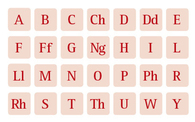|
That’s ‘Welcome’ in Welsh. And it will be a warm welcome that you receive when you arrive in Wales in September. Journalists are by their nature curious, so this is the first in a series of newsletters which will aim to give you a little of the story of the place you’ll be visiting.
We'll also include some background colour about the country and the cities in which the summit is being staged that may help with the reports that you’ll be writing, filming or tweeting for your audiences at home, plus links to further information.
The summit is hosted at Newport, Wales. Wales is one of the four constituent countries of the United Kingdom, (England, Northern Ireland,
Scotland, Wales) with a unique constitutional position within what is a pretty
unique nation-state.
 The summit venue, the Celtic Manor Resort is in the city and county of
Newport, Wales’s youngest city, but many of you will be staying in hotels or be
covering events in the nearby city and county of Cardiff, Wales’s capital city.
Whilst there’s barely 10 miles or 15 km between the two cities, both have rich
histories, local civic pride and sporting rivalries that divide and define
them.
Some of you may be staying even further afield, perhaps in Swansea, Wales’s
own city by the bay or over the English border and Severn bridges in Bristol.
We hope that you find a
warm welcome here in Wales, and that these pages add something or signpost you
to further information about Wales. Please get in touch, drop us an e-mail at aboutwales@wales.gsi.gov.uk if we can help
with information, provide imagery or set up visits for you when you’re with us.
Find out more interesting facts about Wales by downloading a copy of Wales 101.
|
 Translated: “How are you?”. This is the
most common form of greeting in the Welsh language and one you may well hear
during your stay.
Cymraeg, the Welsh language is one of the oldest living languages in Europe. Around 20% of the Welsh population
speak the language fluently. It’s a language which is closely
related to other Celtic languages such
as Cornish and Breton.
You should see plenty of evidence of the language during
your visit to Wales – (most) place names and road signs are in both English and
Welsh and there are Welsh language TV and radio channels.
The Welsh Government’s vision is to see the Welsh language thriving in
Wales. Legislation passed in 2011 means
the Welsh and English languages should be treated equally. Welsh-medium
schools, where pupils are taught all their subjects in Welsh, are increasingly popular across the country and Welsh is compulsory
until the age of 16 in other schools.
We have a different alphabet as well
– ours has 28 letters – rather than the 26 in the English alphabet . We
don’t have k, v, x and z for example and
in a few cases the Welsh "letter" is actually made up of two
characters ( "ch", "dd"). So next time you’re doing a Welsh
crossword puzzle remember that these double character letters fit into one box!
Learn more about Wales and the Welsh language.
|
Wales is steeped in culture and history and its people have a proud sense of ‘belonging’. Cultural heritage is something we live and feel. ‘Hiraeth’ is a Welsh word with no literal translation, but many Welsh people living outside its borders say they feel it keenly. It is an expression of the bond with your country and surroundings and a deep longing for your homeland. Yes, we’re a poetic, musical, romantic bunch and passion for our country runs deep in our veins, as witnessed on rugby international weekends!
|